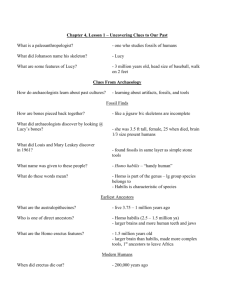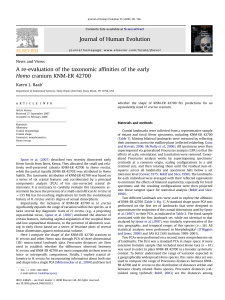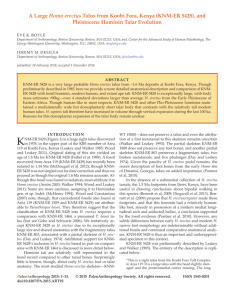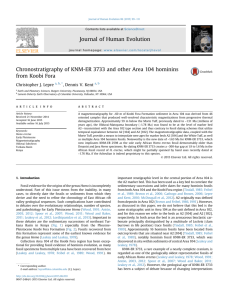English
advertisement
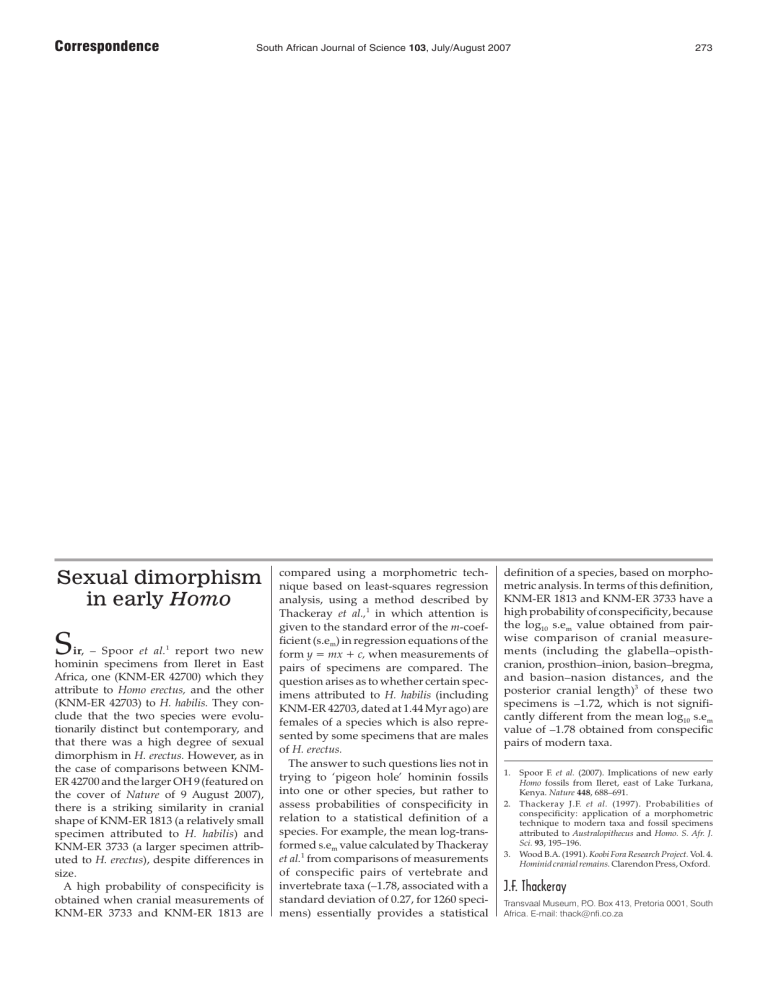
Correspondence South African Journal of Science 103, July/August 2007 Sexual dimorphism in early Homo S ir, – Spoor et al.1 report two new hominin specimens from Ileret in East Africa, one (KNM-ER 42700) which they attribute to Homo erectus, and the other (KNM-ER 42703) to H. habilis. They conclude that the two species were evolutionarily distinct but contemporary, and that there was a high degree of sexual dimorphism in H. erectus. However, as in the case of comparisons between KNMER 42700 and the larger OH 9 (featured on the cover of Nature of 9 August 2007), there is a striking similarity in cranial shape of KNM-ER 1813 (a relatively small specimen attributed to H. habilis) and KNM-ER 3733 (a larger specimen attributed to H. erectus), despite differences in size. A high probability of conspecificity is obtained when cranial measurements of KNM-ER 3733 and KNM-ER 1813 are compared using a morphometric technique based on least-squares regression analysis, using a method described by Thackeray et al.,1 in which attention is given to the standard error of the m-coefficient (s.em) in regression equations of the form y = mx + c, when measurements of pairs of specimens are compared. The question arises as to whether certain specimens attributed to H. habilis (including KNM-ER 42703, dated at 1.44 Myr ago) are females of a species which is also represented by some specimens that are males of H. erectus. The answer to such questions lies not in trying to ‘pigeon hole’ hominin fossils into one or other species, but rather to assess probabilities of conspecificity in relation to a statistical definition of a species. For example, the mean log-transformed s.em value calculated by Thackeray et al.1 from comparisons of measurements of conspecific pairs of vertebrate and invertebrate taxa (–1.78, associated with a standard deviation of 0.27, for 1260 specimens) essentially provides a statistical 273 definition of a species, based on morphometric analysis. In terms of this definition, KNM-ER 1813 and KNM-ER 3733 have a high probability of conspecificity, because the log10 s.em value obtained from pairwise comparison of cranial measurements (including the glabella–opisthcranion, prosthion–inion, basion–bregma, and basion–nasion distances, and the posterior cranial length)3 of these two specimens is –1.72, which is not significantly different from the mean log10 s.em value of –1.78 obtained from conspecific pairs of modern taxa. 1. Spoor F. et al. (2007). Implications of new early Homo fossils from Ileret, east of Lake Turkana, Kenya. Nature 448, 688–691. 2. Thackeray J.F. et al. (1997). Probabilities of conspecificity: application of a morphometric technique to modern taxa and fossil specimens attributed to Australopithecus and Homo. S. Afr. J. Sci. 93, 195–196. 3. Wood B.A. (1991). Koobi Fora Research Project. Vol. 4. Hominid cranial remains. Clarendon Press, Oxford. J.F. Thackeray Transvaal Museum, P.O. Box 413, Pretoria 0001, South Africa. E-mail: thack@nfi.co.za
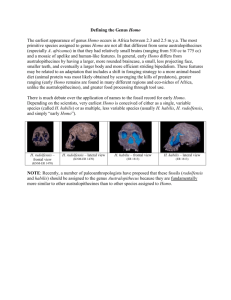

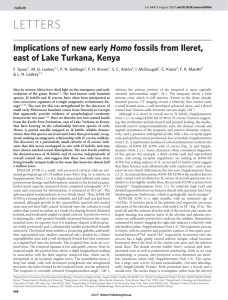
![DataGrid_homininresearch[1]](http://s2.studylib.net/store/data/010083531_1-31bef51296f22a8cdf74d5afa5580fd1-300x300.png)
